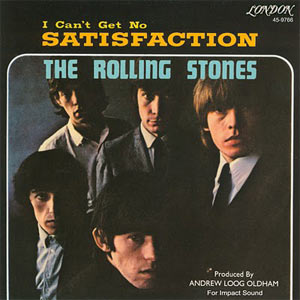We Must All be Engaged in the Design, Delivery, and Re-imagination of Healthcare
Written by Dr Nick on June 17, 2014
Previously posted on HITConsultant
On a recent flight, I had my headphones on and the Rolling Stones’ “Satisfaction”
began to play.
It’s a song I have heard hundreds of times over the years, but I was struck by the difference listening to it with headphones made. With no distractions, I noticed the bass line, in time with the percussion, provides the perfect offset to Mick Jagger’s distinctively strained voice. It was a completely different experience than hearing the track play in the background of a movie or while at a restaurant. Being fully-immersed and listening only to that song allowed me to pick out and appreciate subtle details I had never noticed previously. It’s no surprise that things sound differently when you’re able to concentrate your full attention on what is being said, but as I was sitting there, I became acutely aware of the function headphones serve—they enable the wearer to listen, blocking out distractions.
That is exactly what we are seeking in healthcare and it has proven to be difficult to achieve – in part because of pace, complexity of care, and technology. For centuries, physicians have listened to their patients and relied on their senses— their powers of observation— and matched these insights with clinical experience to heal. Clinicians need to be able to listen and concentrate on what their patient is telling them and noticing those distinctive symptoms he or she may be exhibiting. As Sir William Osler
famously advised:
Being able to dedicate your undivided attention to anything these days is a rarity, but in healthcare, it is a crucial but frequently missing element. The last thing you want to feel when you are at your most vulnerable is that your physician is multi-tasking. Patient satisfaction scores will suffer, but more concerning are the clinical risks and missed opportunities of distracted physicians.
Distracted clinicians are the result of what Dr. Steven Stack of the American Medical Association refers to as an “over-designed” health IT system.” In a recent discussion with industry leaders, he explained that we seem to have become victims of our own ambition. We have devised structures that don’t work for everyone and policies that create very real, very expensive consequences for those who don’t abide. And this has left physicians stretched too thin, trying to do more in less time without any direct impact on improving their ability to care for their patients.
So, maybe it’s time we scale back. Dr. John Halamka, CIO of Beth Israel Deaconess Medical Center and co-chair of the nation HIT Standards Committee, noted that while we are in this period of transition and growth, we need to focus on parsimony, or determining the smallest number of moving parts that need to be adjusted in order to create seamlessness in HIT. Quite simply put, while the cart has been upset, there is no reason to trample all over the apples.
The MIT Technology Review recently interviewed Sarah Lewis, a doctoral candidate at Yale, about her recent book that explores how different unlikely circumstances or paths, like failure, have often spurred innovation. Citing creative geniuses such as Cezanne and Beethoven to Nobel laureates, she defines failure as the gap between where one is and where one would like to be. Confronting this gap, she asserts, is important because it “lets people go deep with their failure while letting it be an entrepreneurial endeavor if they like, or an innovative discovery.” We, in health IT, are currently at that gap where there is a disparity between where we are and where we would like to be.
The recent ICD-10 delay has provided the perfect opportunity for us to find Halamka’s parsimony, leveraging solutions that work for physicians and creating consistency and impact wherever possible. Like medicine itself, there will be no one perfect solution for every physician or organization, but we need to begin finding things that work – from re-skinning EHRs with easy to use tools like single sign-on or mobility to systems that respond to voice, touch or swipe to improve the experience for clinicians and patients. We need to start thinking of health IT more like headphones, coming in different styles to suit preferences, but providing the same function of reducing distraction and enabling the clinician to focus on the inflections in their patients’ voices, and truly hearing what is being said.
As Mick Jagger poignantly remarked, “The past is a great place and I don’t want to erase it … but I don’t want to be its prisoner, either.” We have accomplished a lot, but it is time to learn from the past and break free from what isn’t working. I think we can get health IT satisfaction (despite what the song says), but to do so we must all be engaged in the design, delivery, and re-imagination of healthcare and its intersection with technology. This truly is the art of medicine and we are all virtuosos contributing to the next masterpiece of healthcare.




